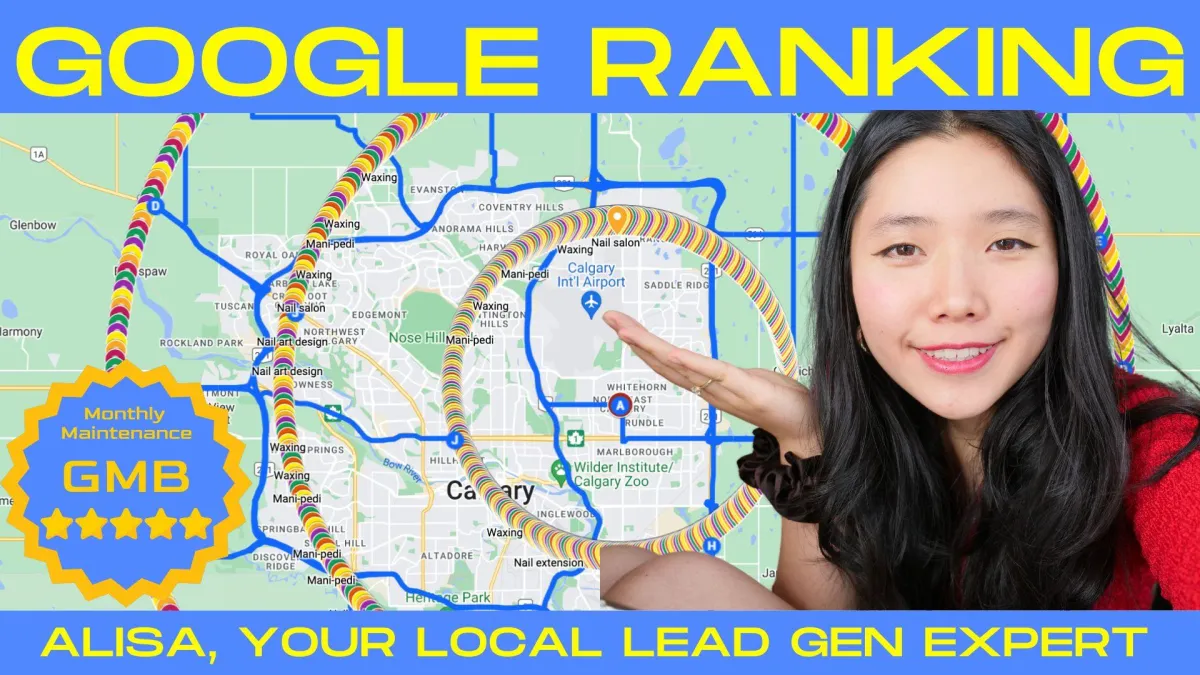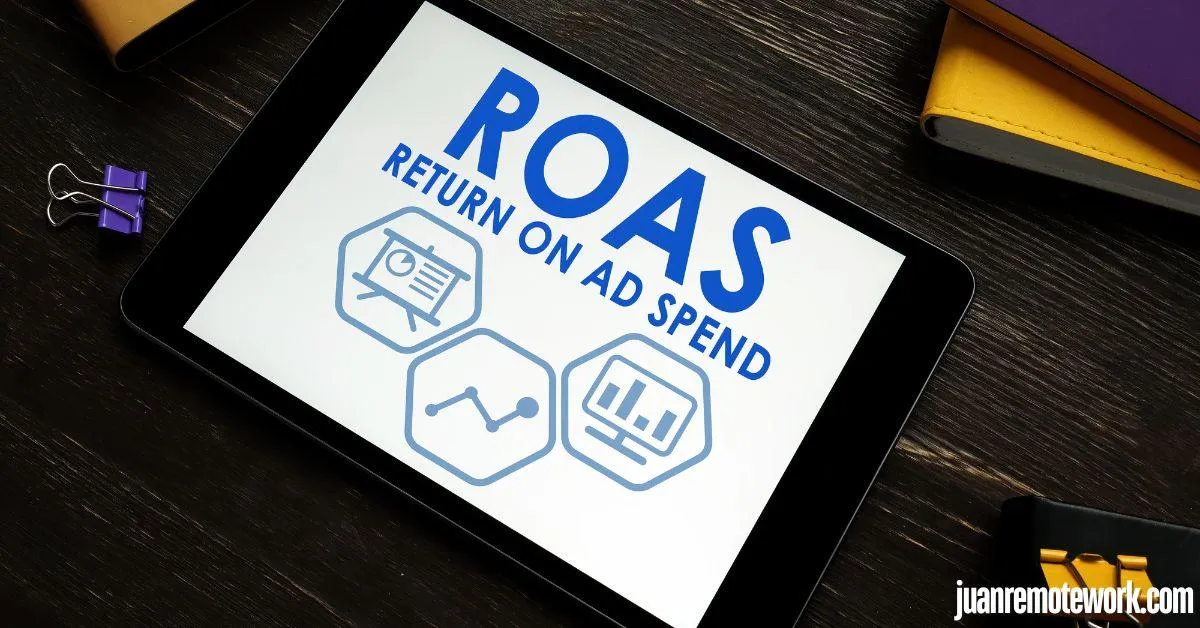Google My Business SEO
Google My Business SEO is a life-time investment for your Google Ranking
What are Google My Business?
Google My Business (GMB)is a free tool provided by Google that helps businesses manage their online presence across Google’s platform, including Google Search and Google Maps. It allows businesses to control how they appear when customers search for them online, making it easier for potential customers to find, learn about, and interact with your business.
Key Features of Google My Business :
Business Profile: Name, Address, Phone Number (NAP): You can update and verify your business name, address, phone number, and business hours to ensure customers can reach you easily.Business
Description:
You can write a brief summary about your business and what services you offer.Business
Categories:
You can select relevant categories that describe your business, helping Google show your business in relevant searches.Photos and
Videos:
Upload high-quality photos and videos to showcase your business, products, or services. This helps improve your visibility and engagement with potential customers.You can add interior, exterior, product, and staff photos, giving customers a sense of your business.
Customer Reviews and Ratings:
Customers can leave reviews about your business, which appear in your profile.You can respond to customer reviews, showing engagement and improving your relationship with customers.Positive reviews can improve your credibility and reputation online.Google Maps Integration:Your business will appear on Google Maps, making it easier for customers to find your physical location and get directions.Map
Pack: Google’s local search results often include a map of businesses that match your query. GMB helps ensure you appear in these search results.Insights and Analytics:Google My Business provides data about how customers find your business, including:How they searched (e.g., through direct search or via Google Maps)Where they found your business (e.g., search engine, maps, etc.)Actions taken (e.g., calls, website visits, direction requests)These insights help you understand customer behavior and optimize your profile.Appointment Booking and Messaging:Businesses that accept appointments or bookings can integrate scheduling software, allowing customers to book directly from the GMB profile.Customers can also message your business directly through Google.Posts:You can create Google Posts to share updates, offers, events, or news directly on your profile.These posts appear in your Google listing and can encourage customer engagement.
Why Google My Business is Important:
Improves Local SEO:GMB is an essential part of Local SEO (Search Engine Optimization), helping your business appear in local search results. If someone searches for businesses near them (e.g., "photographer near me"), having an optimized GMB profile improves the chances of appearing in search results.Increases Visibility:With a well-maintained GMB profile, your business can show up in Google’s Local Pack, Map Pack, and organic search results, increasing your chances of getting discovered by potential customers.Engages Customers:Reviews, photos, and posts make your profile more engaging and informative, increasing the likelihood of users reaching out or visiting your business.Helps with Customer Trust:A complete and regularly updated Google My Business profile gives customers confidence that your business is legitimate and trustworthy.
How to Get Started with Google My Business :
Create or Claim Your Business Profile:If you haven't done so already, go to Google My Business and create an account or claim your business.Verify Your Business:Google will ask you to verify your business, usually by sending a postcard with a verification code to your business address.Fill in Your Information:Add details like your business hours, contact information, website, and a brief description of your services.Add Photos:Upload images that represent your business. High-quality images of your location, products, or services are essential for engaging potential customers.Keep Your Profile Updated:Regularly update your hours, special offers, and any changes to your services. Respond to reviews and posts.
Common Mistakes to Avoid:
Inaccurate Information:Always make sure your business information (address, phone number, etc.) is accurate. Inconsistent information can hurt your local SEO and confuse potential customers.Ignoring Reviews:Failing to respond to reviews (both positive and negative) can make your business seem unengaged. Responding shows that you care about feedback.Not Uploading Photos:A profile without photos can look incomplete or unprofessional. Always upload quality photos to attract customers.Not Keeping Your Business Hours Updated:Especially during holidays or special events, update your hours so customers don’t show up when you’re closed.
🏆Successful Case-Studies🏆

Ad Management Packages


Dominate Your Local Google Map Ranking?
AD SPEND = Is not money that will be going to our agency, but it will be going directly to Meta and Google platforms in order for our ads to be shown.
N I C H E S
STEM Academies
Dentals
Medspas & Botox
Ecommerce
Cybersecurity
Defi & Finances
View Ad Ideas & Examples

Facebook Ads and Instagram Ads: The Ultimate Guide to Boost Your Business in 2025
Frequently Asked Questions (FAQ)
1. Why should I use Facebook and Instagram ads for my business?
Facebook and Instagram ads allow you to reach highly targeted audiences based on demographics, interests, and behaviors, making them powerful tools to generate leads, increase sales, and build brand awareness early in the customer journey.
2. How do I set a budget for Facebook and Instagram ad campaigns?
You can set either a daily or lifetime budget. It’s important to align your budget with your campaign goals and expected return on investment (ROI). Start small, analyze performance, and scale what works.
3. What types of ads can I run on Facebook and Instagram?
Both platforms offer multiple ad formats including single image ads, video ads, carousel ads, slideshow ads, lead ads, and collection ads. Each format serves different marketing objectives, from product showcasing to lead generation.
4. How do Facebook and Instagram ads impact SEO?
While ads do not directly improve SEO rankings, they drive traffic and engagement to your website or social profiles, which can indirectly support your SEO efforts by increasing brand visibility and referral traffic.
5. How do I link my Instagram Business account to Facebook for advertising?
You need to claim your Instagram Business account in Facebook Business Manager and link it to your Facebook Page. Then, you can create and manage Instagram ads via Facebook Ads Manager.

Introduction: Why Facebook and Instagram Ads Are Essential for Your Marketing Strategy in 2025
In the ever-evolving digital landscape, Facebook and Instagram ads remain among the most effective tools for businesses to reach and engage their target audiences. With over two billion monthly active users on Facebook and Instagram’s visually rich platform attracting millions daily, these channels offer unparalleled opportunities to grow your brand, generate leads, and boost sales. Whether you are a small business owner or a seasoned marketer, mastering the art of Facebook and Instagram advertising can significantly enhance your marketing ROI. This blog post will guide you through the essentials, strategies, and best practices to maximize your ad campaigns in 2025.
Understanding Facebook and Instagram Ads: Key Concepts and Formats
What Are Facebook Ads?
Facebook ads are paid messages that appear in users’ news feeds, sidebars, or within Facebook’s Audience Network. They are designed to be highly targeted, leveraging Facebook’s vast data on user demographics, interests, and behaviors to deliver personalized ads.
What Are Instagram Ads?
Instagram ads operate through Facebook’s ad platform and appear natively within users’ feeds, stories, or explore pages. They blend seamlessly with organic content, providing a non-disruptive user experience while promoting your products or services.
Types of Ads on Facebook and Instagram
Ad TypeDescriptionBest ForSingle Image AdsA single compelling image with text and a call-to-action (CTA).Quick product highlightsVideo AdsShort to long videos that tell a story or demonstrate a product.Engagement and brand storytellingCarousel AdsMultiple images or videos users can swipe through.Showcasing multiple productsLead AdsCollect user information directly within Facebook or Instagram.Lead generation campaignsSlideshow AdsLightweight video-like ads created from images and text.Interactive storytellingCollection AdsCombine videos and images showcasing multiple products in a single ad unit.Ecommerce and product discovery
Understanding these formats helps tailor your campaigns to your marketing goals.
Setting Up and Optimizing Your Facebook and Instagram Ads

Step 1: Define Your Campaign Objective
Choose from objectives such as brand awareness, traffic, lead generation, conversions, or engagement. Facebook’s algorithm optimizes your ad delivery based on this goal.
Step 2: Target Your Audience with Precision
Use Facebook’s detailed targeting options to reach users by location, age, gender, interests, behaviors, and even life events (e.g., recently engaged couples). Geo-targeting is especially powerful for local businesses aiming to attract nearby customers.
Step 3: Budgeting and Scheduling
Set a daily or lifetime budget and schedule your ads to run continuously or within specific dates. Advanced options allow you to run ads during peak hours or accelerate delivery for time-sensitive campaigns.
Step 4: Create Engaging Ad Content
Use high-quality images or videos optimized for platform specifications (e.g., 1200x628 pixels for Facebook feed, 1080x1920 for Instagram stories).
Limit text on images to improve ad approval rates and engagement.
Include clear CTAs to guide users toward desired actions.
Step 5: Use Facebook Pixel for Tracking and Retargeting
Install Facebook Pixel on your website to track visitor behavior, measure conversions, and create retargeting campaigns that re-engage users who interacted with your ads or site.
Best Practices to Maximize Your Facebook and Instagram Ads Success
Test Multiple Ad Variations: Experiment with different creatives, headlines, and CTAs to identify what resonates best with your audience.
Leverage Lookalike Audiences: Use data from your existing customers to find new users with similar profiles.
Optimize for Mobile: Most users access these platforms via mobile devices, so ensure your ads are mobile-friendly.
Analyze and Adjust: Regularly review campaign metrics and adjust targeting, creatives, or budgets to improve performance.
FAQ Section Recap
Facebook and Instagram ads offer precise targeting and diverse ad formats to suit various marketing goals.
Budgets should align with your ROI expectations and campaign objectives.
Ads drive traffic and engagement that can indirectly benefit SEO.
Linking Instagram Business accounts to Facebook Ads Manager enables seamless campaign management.
Use Facebook Pixel for tracking and retargeting to maximize conversions.
Summary: Unlocking the Power of Facebook and Instagram Ads in 2025
Facebook and Instagram advertising remain indispensable for businesses aiming to grow in 2025. Their ability to target specific audiences with diverse ad formats, combined with robust analytics and optimization tools, empowers marketers to create highly effective campaigns. By understanding the platforms, setting clear objectives, crafting engaging content, and continuously optimizing, you can maximize your marketing ROI and build lasting customer relationships.
Call to Action
Ready to take your Facebook and Instagram advertising to the next level? Contact our expert marketing team today to schedule a personalized demo or consultation. Discover how tailored ad strategies can drive real results for your business in 2025 and beyond.
👇Get In Touch👇
Email: [email protected]
Address
Vancouver, British Columbia, Canada
☎️ Phone Number
778-680-7206
Insta: @monalisa_inunderground
@alisaadshow
💡Other Projects:💡
ZADKA Clothes + Quotes = IMPACT
MonAlisa Maternity Maternity Marketing Agency
Canadian Neighbours Canadian Neighbours
Let's Cold Call Polite but Aggressive Female Cold Calling Agency. www.letscoldcall.agency. @letscoldcall

Copyright 2025. All rights reserved
Watch My Youtube Videos!
John Doe
Check out My Content

Facebook Ads and Instagram Ads: The Ultimate Guide to Boost Your Business in 2025
Frequently Asked Questions (FAQ)
1. Why should I use Facebook and Instagram ads for my business?
Facebook and Instagram ads allow you to reach highly targeted audiences based on demographics, interests, and behaviors, making them powerful tools to generate leads, increase sales, and build brand awareness early in the customer journey.
2. How do I set a budget for Facebook and Instagram ad campaigns?
You can set either a daily or lifetime budget. It’s important to align your budget with your campaign goals and expected return on investment (ROI). Start small, analyze performance, and scale what works.
3. What types of ads can I run on Facebook and Instagram?
Both platforms offer multiple ad formats including single image ads, video ads, carousel ads, slideshow ads, lead ads, and collection ads. Each format serves different marketing objectives, from product showcasing to lead generation.
4. How do Facebook and Instagram ads impact SEO?
While ads do not directly improve SEO rankings, they drive traffic and engagement to your website or social profiles, which can indirectly support your SEO efforts by increasing brand visibility and referral traffic.
5. How do I link my Instagram Business account to Facebook for advertising?
You need to claim your Instagram Business account in Facebook Business Manager and link it to your Facebook Page. Then, you can create and manage Instagram ads via Facebook Ads Manager.

Introduction: Why Facebook and Instagram Ads Are Essential for Your Marketing Strategy in 2025
In the ever-evolving digital landscape, Facebook and Instagram ads remain among the most effective tools for businesses to reach and engage their target audiences. With over two billion monthly active users on Facebook and Instagram’s visually rich platform attracting millions daily, these channels offer unparalleled opportunities to grow your brand, generate leads, and boost sales. Whether you are a small business owner or a seasoned marketer, mastering the art of Facebook and Instagram advertising can significantly enhance your marketing ROI. This blog post will guide you through the essentials, strategies, and best practices to maximize your ad campaigns in 2025.
Understanding Facebook and Instagram Ads: Key Concepts and Formats
What Are Facebook Ads?
Facebook ads are paid messages that appear in users’ news feeds, sidebars, or within Facebook’s Audience Network. They are designed to be highly targeted, leveraging Facebook’s vast data on user demographics, interests, and behaviors to deliver personalized ads.
What Are Instagram Ads?
Instagram ads operate through Facebook’s ad platform and appear natively within users’ feeds, stories, or explore pages. They blend seamlessly with organic content, providing a non-disruptive user experience while promoting your products or services.
Types of Ads on Facebook and Instagram
Ad TypeDescriptionBest ForSingle Image AdsA single compelling image with text and a call-to-action (CTA).Quick product highlightsVideo AdsShort to long videos that tell a story or demonstrate a product.Engagement and brand storytellingCarousel AdsMultiple images or videos users can swipe through.Showcasing multiple productsLead AdsCollect user information directly within Facebook or Instagram.Lead generation campaignsSlideshow AdsLightweight video-like ads created from images and text.Interactive storytellingCollection AdsCombine videos and images showcasing multiple products in a single ad unit.Ecommerce and product discovery
Understanding these formats helps tailor your campaigns to your marketing goals.
Setting Up and Optimizing Your Facebook and Instagram Ads

Step 1: Define Your Campaign Objective
Choose from objectives such as brand awareness, traffic, lead generation, conversions, or engagement. Facebook’s algorithm optimizes your ad delivery based on this goal.
Step 2: Target Your Audience with Precision
Use Facebook’s detailed targeting options to reach users by location, age, gender, interests, behaviors, and even life events (e.g., recently engaged couples). Geo-targeting is especially powerful for local businesses aiming to attract nearby customers.
Step 3: Budgeting and Scheduling
Set a daily or lifetime budget and schedule your ads to run continuously or within specific dates. Advanced options allow you to run ads during peak hours or accelerate delivery for time-sensitive campaigns.
Step 4: Create Engaging Ad Content
Use high-quality images or videos optimized for platform specifications (e.g., 1200x628 pixels for Facebook feed, 1080x1920 for Instagram stories).
Limit text on images to improve ad approval rates and engagement.
Include clear CTAs to guide users toward desired actions.
Step 5: Use Facebook Pixel for Tracking and Retargeting
Install Facebook Pixel on your website to track visitor behavior, measure conversions, and create retargeting campaigns that re-engage users who interacted with your ads or site.
Best Practices to Maximize Your Facebook and Instagram Ads Success
Test Multiple Ad Variations: Experiment with different creatives, headlines, and CTAs to identify what resonates best with your audience.
Leverage Lookalike Audiences: Use data from your existing customers to find new users with similar profiles.
Optimize for Mobile: Most users access these platforms via mobile devices, so ensure your ads are mobile-friendly.
Analyze and Adjust: Regularly review campaign metrics and adjust targeting, creatives, or budgets to improve performance.
FAQ Section Recap
Facebook and Instagram ads offer precise targeting and diverse ad formats to suit various marketing goals.
Budgets should align with your ROI expectations and campaign objectives.
Ads drive traffic and engagement that can indirectly benefit SEO.
Linking Instagram Business accounts to Facebook Ads Manager enables seamless campaign management.
Use Facebook Pixel for tracking and retargeting to maximize conversions.
Summary: Unlocking the Power of Facebook and Instagram Ads in 2025
Facebook and Instagram advertising remain indispensable for businesses aiming to grow in 2025. Their ability to target specific audiences with diverse ad formats, combined with robust analytics and optimization tools, empowers marketers to create highly effective campaigns. By understanding the platforms, setting clear objectives, crafting engaging content, and continuously optimizing, you can maximize your marketing ROI and build lasting customer relationships.
Call to Action
Ready to take your Facebook and Instagram advertising to the next level? Contact our expert marketing team today to schedule a personalized demo or consultation. Discover how tailored ad strategies can drive real results for your business in 2025 and beyond.

Facebook Ads and Instagram Ads: The Ultimate Guide to Boost Your Business in 2025
Frequently Asked Questions (FAQ)
1. Why should I use Facebook and Instagram ads for my business?
Facebook and Instagram ads allow you to reach highly targeted audiences based on demographics, interests, and behaviors, making them powerful tools to generate leads, increase sales, and build brand awareness early in the customer journey.
2. How do I set a budget for Facebook and Instagram ad campaigns?
You can set either a daily or lifetime budget. It’s important to align your budget with your campaign goals and expected return on investment (ROI). Start small, analyze performance, and scale what works.
3. What types of ads can I run on Facebook and Instagram?
Both platforms offer multiple ad formats including single image ads, video ads, carousel ads, slideshow ads, lead ads, and collection ads. Each format serves different marketing objectives, from product showcasing to lead generation.
4. How do Facebook and Instagram ads impact SEO?
While ads do not directly improve SEO rankings, they drive traffic and engagement to your website or social profiles, which can indirectly support your SEO efforts by increasing brand visibility and referral traffic.
5. How do I link my Instagram Business account to Facebook for advertising?
You need to claim your Instagram Business account in Facebook Business Manager and link it to your Facebook Page. Then, you can create and manage Instagram ads via Facebook Ads Manager.

Introduction: Why Facebook and Instagram Ads Are Essential for Your Marketing Strategy in 2025
In the ever-evolving digital landscape, Facebook and Instagram ads remain among the most effective tools for businesses to reach and engage their target audiences. With over two billion monthly active users on Facebook and Instagram’s visually rich platform attracting millions daily, these channels offer unparalleled opportunities to grow your brand, generate leads, and boost sales. Whether you are a small business owner or a seasoned marketer, mastering the art of Facebook and Instagram advertising can significantly enhance your marketing ROI. This blog post will guide you through the essentials, strategies, and best practices to maximize your ad campaigns in 2025.
Understanding Facebook and Instagram Ads: Key Concepts and Formats
What Are Facebook Ads?
Facebook ads are paid messages that appear in users’ news feeds, sidebars, or within Facebook’s Audience Network. They are designed to be highly targeted, leveraging Facebook’s vast data on user demographics, interests, and behaviors to deliver personalized ads.
What Are Instagram Ads?
Instagram ads operate through Facebook’s ad platform and appear natively within users’ feeds, stories, or explore pages. They blend seamlessly with organic content, providing a non-disruptive user experience while promoting your products or services.
Types of Ads on Facebook and Instagram
Ad TypeDescriptionBest ForSingle Image AdsA single compelling image with text and a call-to-action (CTA).Quick product highlightsVideo AdsShort to long videos that tell a story or demonstrate a product.Engagement and brand storytellingCarousel AdsMultiple images or videos users can swipe through.Showcasing multiple productsLead AdsCollect user information directly within Facebook or Instagram.Lead generation campaignsSlideshow AdsLightweight video-like ads created from images and text.Interactive storytellingCollection AdsCombine videos and images showcasing multiple products in a single ad unit.Ecommerce and product discovery
Understanding these formats helps tailor your campaigns to your marketing goals.
Setting Up and Optimizing Your Facebook and Instagram Ads

Step 1: Define Your Campaign Objective
Choose from objectives such as brand awareness, traffic, lead generation, conversions, or engagement. Facebook’s algorithm optimizes your ad delivery based on this goal.
Step 2: Target Your Audience with Precision
Use Facebook’s detailed targeting options to reach users by location, age, gender, interests, behaviors, and even life events (e.g., recently engaged couples). Geo-targeting is especially powerful for local businesses aiming to attract nearby customers.
Step 3: Budgeting and Scheduling
Set a daily or lifetime budget and schedule your ads to run continuously or within specific dates. Advanced options allow you to run ads during peak hours or accelerate delivery for time-sensitive campaigns.
Step 4: Create Engaging Ad Content
Use high-quality images or videos optimized for platform specifications (e.g., 1200x628 pixels for Facebook feed, 1080x1920 for Instagram stories).
Limit text on images to improve ad approval rates and engagement.
Include clear CTAs to guide users toward desired actions.
Step 5: Use Facebook Pixel for Tracking and Retargeting
Install Facebook Pixel on your website to track visitor behavior, measure conversions, and create retargeting campaigns that re-engage users who interacted with your ads or site.
Best Practices to Maximize Your Facebook and Instagram Ads Success
Test Multiple Ad Variations: Experiment with different creatives, headlines, and CTAs to identify what resonates best with your audience.
Leverage Lookalike Audiences: Use data from your existing customers to find new users with similar profiles.
Optimize for Mobile: Most users access these platforms via mobile devices, so ensure your ads are mobile-friendly.
Analyze and Adjust: Regularly review campaign metrics and adjust targeting, creatives, or budgets to improve performance.
FAQ Section Recap
Facebook and Instagram ads offer precise targeting and diverse ad formats to suit various marketing goals.
Budgets should align with your ROI expectations and campaign objectives.
Ads drive traffic and engagement that can indirectly benefit SEO.
Linking Instagram Business accounts to Facebook Ads Manager enables seamless campaign management.
Use Facebook Pixel for tracking and retargeting to maximize conversions.
Summary: Unlocking the Power of Facebook and Instagram Ads in 2025
Facebook and Instagram advertising remain indispensable for businesses aiming to grow in 2025. Their ability to target specific audiences with diverse ad formats, combined with robust analytics and optimization tools, empowers marketers to create highly effective campaigns. By understanding the platforms, setting clear objectives, crafting engaging content, and continuously optimizing, you can maximize your marketing ROI and build lasting customer relationships.
Call to Action
Ready to take your Facebook and Instagram advertising to the next level? Contact our expert marketing team today to schedule a personalized demo or consultation. Discover how tailored ad strategies can drive real results for your business in 2025 and beyond.
Successes Case Project
More Alisa's Brand

Competition & Attorney
Financial

Giving Million Air Wings
Violence

Car Accident Insurance
Founder

ZADKA
